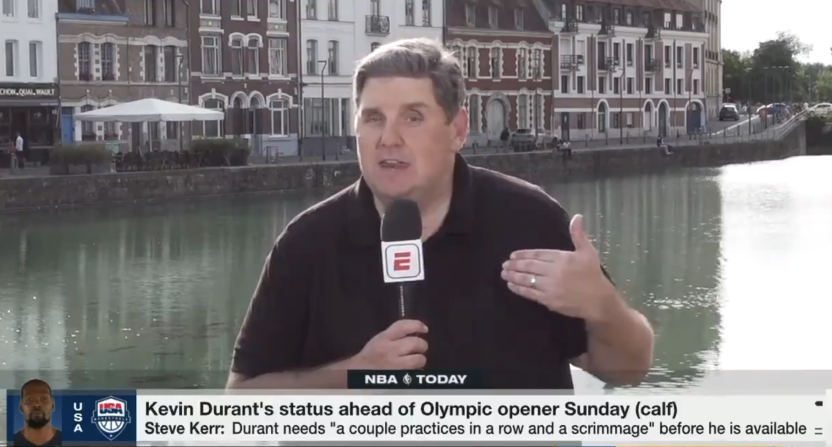As ESPN and much of the sports media world move away from having straight-up journalists on TV, Brian Windhorst feels like a throwback in the best way. Especially with shows like Around the Horn getting the axe, his presence on programs like First Take has stood out, even if not enough people are talking about it.
Jemele Hill is, though.
She referenced a recent First Take discussion about Anthony Edwards as a prime example. Windhorst provided crucial context that only a journalist with actual access could provide. He was at Minnesota’s season-ending press conference and shared key insights about the advice Michael Jordan gave Edwards.
It’s that type of on-the-ground reporting that adds real depth to conversations that otherwise risk becoming surface-level takes. And that’s not meant to be a criticism of Jay Williams and Kendrick Perkins, among several others, but rather a referendum on what the medium risks morphing into without those like Windy on TV.
As Hill notes, sports TV appears to be shifting away from journalists, favoring former athletes or entertainers. That being said, the combination of a knowledgeable journalist and a former player yields the best conversations, as it keeps both sides accountable.
“With the cancellation of Around the Horn, there aren’t many spaces for journalists to thrive,” Hill wrote. “Get Up still uses a fair amount of journalists. First Take is a real rarity in that it is a journalist-led show (Stephen A. Smith). I don’t know if we’ll really see that on sports television anymore.”
Responding to the conversation, another former ESPNer, Taylor Twellman, jumped in with a solid point. These days, there’s almost no accountability for “takes” or “opinions.” People can be wrong over and over, but it barely matters because the news cycle moves on in 24 hours, as if nothing happened.
“Working with journalists taught me the ‘right and wrong’ at ESPN,” Twellman wrote.
“That’s unfortunately true, “Hill replied. “It didn’t used to be that way. As journalists, we used to feel a lot of shame when we were wrong about things. I’m not sure if it’s that way anymore. Some folks just wait for people to move on.”
It’s not just nostalgia for the old ESPN model, but it’s also a warning about the direction sports commentary might be headed. The blend of firsthand reporting and strong opinion is what elevated shows like Around the Horn, making moments like Windhorst’s insight on First Take resonate. When you strip out the reporting side of the equation, what’s left are louder takes, faster turnarounds, and fewer people held accountable when they get it wrong.
Windhorst’s continued presence on shows like First Take and Get Up is a reminder that journalists still have a fundamental role to play in these conversations. But as the space for them shrinks, so does the depth. The takes might keep coming, but the context might not. And when that disappears, so does a big part of what made sports media worth tuning in for in the first place.
